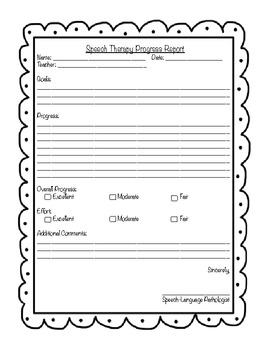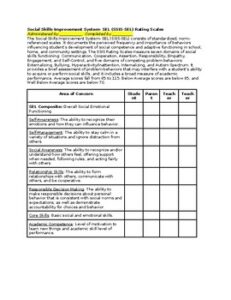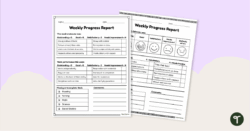Tracking a client’s journey in speech therapy is much more than just ticking boxes; it’s about capturing their unique progress, celebrating milestones, and understanding the challenges they overcome. For therapists, parents, educators, and even the clients themselves, a well-structured report provides invaluable insights into the effectiveness of interventions and the path forward. It’s the narrative of development, showing how far someone has come and what exciting steps are next.
Crafting these reports, however, can often feel like a time-consuming task, pulling valuable moments away from direct client interaction. Yet, the importance of clear, comprehensive, and consistent documentation cannot be overstated. These reports serve as a vital communication tool, ensuring everyone involved has a shared understanding of goals, strategies, and outcomes, fostering a collaborative environment for the client’s success.

This is precisely where a dedicated speech therapy progress report template becomes an indispensable asset. It streamlines the reporting process, ensures all critical information is consistently captured, and helps maintain a high standard of professional communication. With a well-designed template, you can focus more on your client’s progress and less on the administrative burden, making your practice more efficient and effective.
What Makes an Effective Speech Therapy Progress Report?
An effective speech therapy progress report acts as a detailed snapshot of a client’s therapeutic journey over a specific period. It’s not merely a collection of data, but a narrative that illustrates growth, highlights successful strategies, and outlines future directions. A comprehensive report ensures that all stakeholders, from parents to other healthcare providers, can quickly grasp the client’s status and the rationale behind ongoing interventions. It should be both informative and easy to read, striking a balance between clinical detail and clear language.
Client Information and Background
Every good report starts with foundational details. This section establishes who the report is about, providing context for their therapy. It typically includes the client’s name, date of birth, age, diagnosis, the reporting period, and the primary therapist’s name. Sometimes, it also includes brief background information relevant to their speech and language development or any co-occurring conditions that might influence their progress. Ensuring this information is accurate and readily available is crucial for proper identification and record-keeping, laying the groundwork for the rest of the report.
Goals and Objectives
At the heart of any speech therapy program are the goals. This section outlines the long-term goals and specific short-term objectives that were targeted during the reporting period. It’s important to state these goals clearly, often using measurable terms, so that progress can be objectively assessed. A good template will have space to list each goal, its baseline status, and the current status, indicating whether the goal has been met, is in progress, or needs modification. For example, a goal might be “Client will produce /s/ in initial position of words with 80% accuracy across three consecutive sessions.”
Intervention Strategies and Progress Data
This is often the most detailed part of the report, describing the specific therapeutic activities and techniques used to address the client’s goals. It explains *how* the therapy was delivered. More importantly, it presents the data collected during therapy sessions, quantifying the client’s performance against their objectives. This might involve percentages of accuracy, frequency counts, levels of prompting needed, or qualitative observations of changes in communication behavior. For instance, you might report, “Client achieved 75% accuracy for /r/ blends in structured sentences with minimal verbal cues, an increase from 50% accuracy at the beginning of the reporting period.”
You’ll want to include specifics, such as:
- Percentage of correct responses for target sounds or language structures.
- Number of trials completed and successful attempts.
- Level of prompting required (e.g., independent, verbal cue, visual cue, gestural, physical assist).
- Generalization of skills outside of structured therapy tasks.
This section is critical for demonstrating the client’s measurable advancements and justifying the ongoing plan of care. A well-designed speech therapy progress report template will guide you in capturing these data points consistently.
Observations, Recommendations, and Next Steps
Beyond the raw data, this section allows for qualitative observations about the client’s engagement, motivation, and overall communication during therapy. What strategies seemed most effective? Were there any behavioral factors that influenced performance? Based on the progress made and current status, the therapist then provides recommendations for future therapy, potential home practice, or referrals to other professionals. This includes setting new goals, modifying existing ones, or suggesting a different approach if current methods are not yielding desired results. It bridges the gap between past performance and future planning.
Tips for Writing Clear and Concise Reports
Writing a progress report isn’t just about filling in the blanks; it’s about communicating effectively. One of the primary goals is clarity. Ensure your language is straightforward and easy for various audiences to understand, whether it’s a fellow clinician, a parent, or an educator. Avoid overly technical jargon where simpler terms suffice, or provide a brief explanation if clinical terminology is necessary. Remember, the report is a tool for sharing information, and confusion only hinders its purpose.
Conciseness is equally important. While detail is valued, unnecessary wordiness can obscure the main points. Focus on relevant information that directly addresses progress towards goals and observations pertinent to the client’s communication development. Use bullet points or lists when appropriate to present data or recommendations clearly and efficiently. Each sentence should add value and contribute to the overall understanding of the client’s progress during the reporting period.
Finally, always maintain a professional and objective tone. While it’s natural to feel invested in a client’s success, reports should be based on observable data and professional assessment rather than subjective feelings. Highlight strengths and areas of growth accurately, providing specific examples or data points to support your statements. This approach not only lends credibility to your report but also ensures that the information is actionable and helpful for everyone involved in the client’s care.
The consistent use of a structured reporting system not only saves valuable time but also enhances the quality of communication surrounding a client’s therapeutic journey. By providing a clear, comprehensive overview of progress, challenges, and future directions, these documents become powerful tools for collaboration and decision-making. They empower everyone involved to celebrate achievements and address areas needing further attention with confidence and shared understanding.
Ultimately, detailed and thoughtful progress reports contribute significantly to positive client outcomes. They reinforce accountability, guide future interventions, and ensure that every individual receives the most effective and personalized care possible. Embracing a systematic approach to documentation allows practitioners to focus their energy where it matters most: fostering meaningful communication changes and supporting their clients on their path to success.



